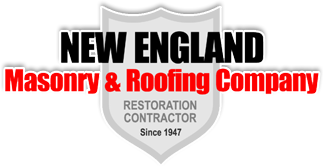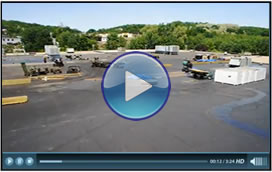Category: Uncategorized
Concrete Restoration in Connecticut – Making Structures Safer for the Future
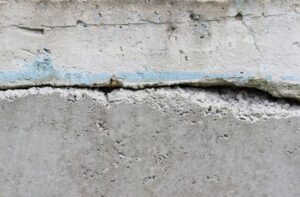
Concrete restoration in Connecticut is an essential part of preserving the cultural and historical heritage, as well as making buildings safer for people who live or work in them. It involves addressing issues such as aging infrastructure, environmental factors, and the need for enhanced resilience.
Here’s how concrete restoration contributes to improving safety:
Preventing Structural Failure
Deterioration of concrete structures can lead to structural failure, posing significant safety risks to the public and property. Concrete restoration techniques, such as concrete repair, reinforcement, and strengthening, help prevent structural failure by addressing underlying issues and restoring the integrity of the concrete.
Mitigating Environmental Damage
Connecticut’s climate, including exposure to freeze-thaw cycles, moisture, salt air, and environmental pollutants, can accelerate concrete deterioration. Concrete restoration involves implementing protective coatings, waterproofing systems, and corrosion inhibitors to mitigate environmental damage and prolong the lifespan of concrete structures.
Improving Safety Standards
Concrete restoration projects adhere to strict safety standards and regulations to ensure the safety of workers, bystanders, and the public during construction activities. Contractors prioritize safety measures such as scaffolding, fall protection, traffic control, and site security to minimize risks and accidents on job sites.
Preserving Historical Structures
Connecticut is home to many historic concrete structures, such as bridges, dams, and buildings that contribute to the state’s cultural heritage. Expert concrete restoration Connecticut companies offer allows for the preservation and adaptive reuse of these historic structures, maintaining their historical significance while ensuring they meet modern safety standards and building codes.
Solving Connecticut Masonry Concerns – A Quick Guide for Better Results

Connecticut’s rich architectural heritage often features masonry, but it comes with its unique set of challenges. If you’re dealing with masonry concerns in the Constitution State, it’s important to remember that you have a way to navigate the issues and achieve better results in your restoration or repair project.
Begin by conducting a comprehensive inspection of the masonry. Have a Connecticut masonry expert identify areas of deterioration, water damage, or structural issues. Understanding the root cause is crucial for developing an effective solution. It could be weather-related, a problem with the foundation, or simply the result of aging.
Connecticut experiences varied weather conditions, from harsh winters with snow and ice to humid summers. When restoring or repairing masonry, choose weather-resistant materials. This includes durable bricks, quality mortar, and sealants that can withstand the state’s seasonal fluctuations. Also ensure that the mortar used matches the original in terms of color, composition, and strength. Precision in pointing is crucial for maintaining the structural integrity of the Connecticut masonry while addressing aesthetic concerns.
Local precipitation, combined with the state’s coastal location, can lead to moisture-related issues. Apply waterproofing solutions to protect masonry from water infiltration. This includes sealers and coatings that form a barrier against rain, snow, and humidity, preventing long-term damage.
If your masonry concerns involve foundation issues, address them promptly. Connecticut’s soil and climate can impact foundations over time. Consult with structural engineers to evaluate and reinforce the foundation as needed, ensuring the stability of the entire structure.
Can Masonry Restoration Threaten the Structural Integrity of Your Building?
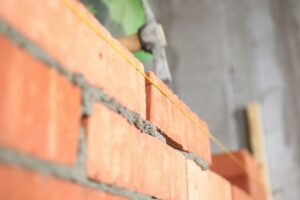
Maintaining a commercial roof is a task that should not be taken lightly, and while your employees may excel in various areas, handling common roofing maintenance tasks is best left to the masonry restoration professionals. There are some very good reasons why DIY is not recommended for commercial roofing, and why your business should consider hiring experienced commercial roofers.
Expertise Matters
Commercial roofs are a different ball game compared to residential ones. They often involve intricate systems, specialized materials, and a larger scale. Professional commercial roofers are equipped with the knowledge and expertise to navigate these complexities. From identifying potential issues to executing repairs, their skills ensure the job is done right the first time.
Safety First
Roof maintenance can be hazardous, especially on larger commercial properties. Trained commercial roofers prioritize safety protocols, minimizing the risk of accidents. They have the necessary equipment and experience to work at heights safely, protecting both themselves and your property.
Specialized Tools and Equipment
Commercial roofing maintenance, especially for large TPO or EPDM roofing systems, often requires specialized tools and equipment that your employees may not have access to or be familiar with. Professional roofers come prepared with the right gear, ensuring that the maintenance tasks are not only effective but also carried out efficiently.
Cost-Effective in the Long Run
While it might seem cost-effective to assign roofing tasks to your in-house team, the reality is that DIY attempts can lead to mistakes, further damage, and costly repairs down the line.
Investing in professional commercial roofing professionals for dealing with seemingly trivial roofing maintenance tasks may seem like an upfront expense, but it’s a smart long-term investment that saves you from more significant financial burdens in the future.
The Importance of Commercial Roofing Expertise in Troubleshooting a TPO Roof
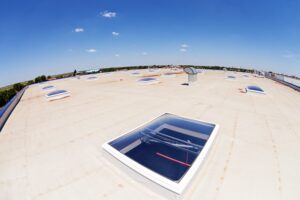
When it comes to your commercial property, the roof is a critical component that requires specialized attention, especially if you have a TPO (Thermoplastic Olefin) roofing system. Understanding the importance of commercial roofing expertise in troubleshooting TPO roofs is essential for maintaining the integrity of your investment.
TPO is known for its durability, energy efficiency, and resistance to UV rays and weathering. However, like any roofing material, it can face issues over time. This is where the expertise of a commercial roofing professional becomes invaluable.
Commercial roofing experts possess the knowledge to identify common TPO roofing issues such as membrane damage, seam separation, or punctures. They are trained to conduct thorough inspections, often utilizing advanced tools and technologies to detect problems not visible to the naked eye.
TPO roofs are renowned for their energy-efficient properties. A roofing expert understands the importance of preserving this efficiency during troubleshooting. Any issues detected are addressed promptly to ensure that your TPO roof continues to contribute to energy savings for your commercial property.
When troubleshooting a TPO roof, precision in repairs is crucial. Commercial roofing professionals have the expertise to perform accurate and effective repairs, ensuring that the integrity of the entire roofing system is maintained. This precision extends the lifespan of your TPO roof and minimizes the risk of future issues.
Beyond addressing existing issues, commercial roofing experts at https://www.nemasonry.com emphasize preventive maintenance. Regular inspections and maintenance routines can identify potential problems before they escalate, saving you both time and money in the long run.
Hiring a Connecticut Commercial Roofer for Simple Repairs
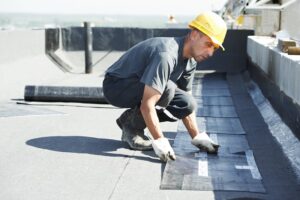
The roof of a commercial building is susceptible to various issues over time. Therefore, it is crucial to enlist the services of a skilled professional commercial roofing CT roofer. By selecting the right professional, you can guarantee the longevity and enduring quality of your commercial roof.
Considering the service options
When deciding on a commercial roofer, you must evaluate the type of services offered. Ask the company you are contacting about the type of repairs it provides and determine the level of customer service it offers. Professional roofers usually provide additional services, such as caulking, gutter cleaning, or skylight installation.
Asking for estimates
Once you have chosen the right roofer for the job, you should ask for estimates and quotes for the job. Make sure you get all the details regarding the cost of the repair and any other charges. Ask the roofer about any applicable warranties that you can enjoy with the repair job.
Inspecting the repairs
After the roof repair is done, you should inspect the work and make sure you are satisfied with it. Thoroughly inspect the roof and all the materials that were used during the project. Look for any blemishes or cracks in the roof and ask the roofer to address them if you find any.
